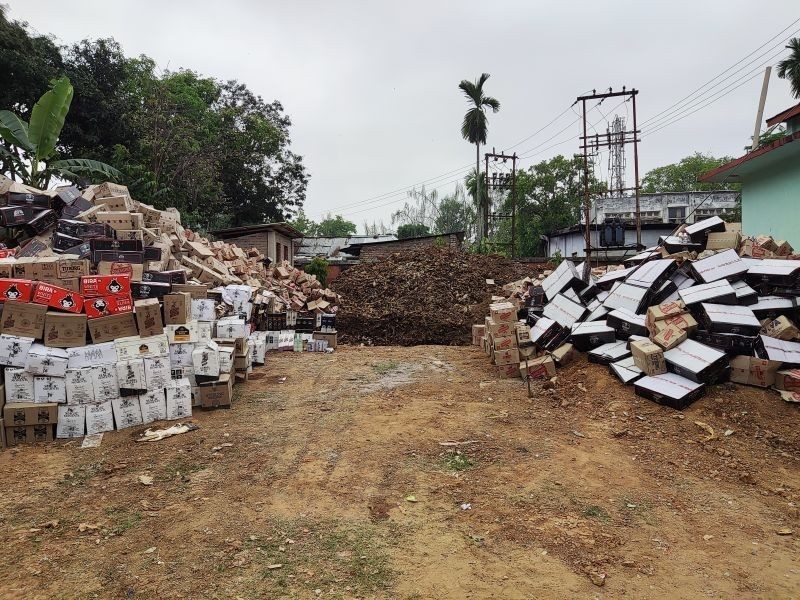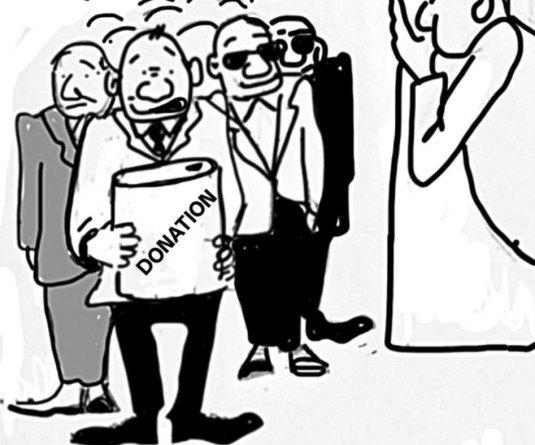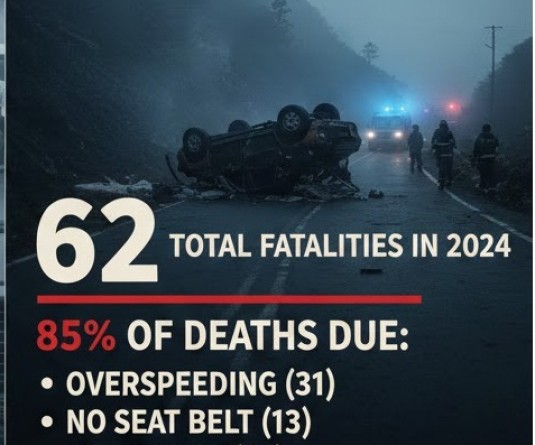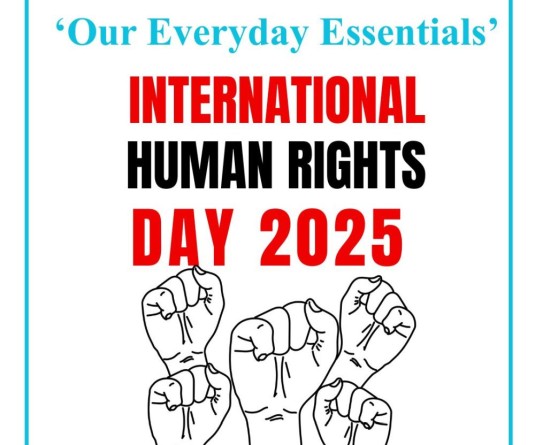Assorted Indian-Made Foreign Liquor (IMFL) seized by the Excise department are seen at the Excise Directorate Complex, Dimapur in this file photo taken April 7, 2022. As per a recent study,annual spending by Nagaland on IMFL was tipped at over Rs 114 crore. (Morung File Photo)

Collated ground info tips annual alcohol spending at over 114 cr
Imkong Walling
Dimapur | January 7
In December 2023, the Nagaland Governor was handed a representation by the Dimapur Urban Council Chairmen Federation demanding the repealing of the failed NLTP Act.
Affixed with the representation was also a research paper on the illicit liquor trade, titled—‘The Paradox of Nagaland Total Liquor Prohibition (NLTP) Act 1989 with special reference to Black Economy in Dimapur.’ It was authored by a team from the Department of Economics, Dimapur Government College (DGC), as part of an academic exercise and was published in the online, peer reviewed, open-access International Journals of Multidisciplinary Research Academy in August 2022.
The authors were Assistant Professor, Dr Vinyühu Lhoungu; Associate Professor Anungla Aier and Moanungsang, an Economics Honours student.
100 cr in black
The paper tipped the spending by Nagaland on Indian-made Foreign Liquor (IMFL) at well over Rs 114 crore, as per information collated, in confidence, from illicit liquor shops in Dimapur. The period of study was 2021-22 implying the figure was deduced from the prices prevailing at the time.
According to the paper, the research objective was to find out the number of illegal liquor shops in Dimapur and assessing the spending on alcohol basing on their daily sales data. Owing to the practical difficulties of identifying every “illegal retail liquor shops/outlets,” the scope of the study was however confined to “illegal liquor wholesale establishments” in the Dimapur municipal area.
As per the paper, a total of 32 such illicit liquor wholesale establishments in 11 localities, from where retailers procure, were surveyed. The wholesalers made a combined sale of around Rs 5.4 lakh a day, the profit margin averaging at 19-20 percent. The daily sales of two shops alone amounted to Rs 1.4 lakh each.
Information thus sourced from the identified illicit wholesale establishments in Dimapur served as a reference. “Drawing inference from Dimapur and taking into account the average of total population and urban population of each district,” excluding the recently created districts, the researchers arrived at the figure of Rs. 114,62,68,320.
The authors arrived at the figure by assuming the retailers charging “just 10 percent higher than the wholesale price.” Using this as a pointer, the monthly spending on liquor by consumers was estimated to amount to Rs 2.1 cr in Dimapur alone.
It included a disclaimer which implied the figure was a cautious estimate “by assuming the lower end.”
Collusive oligopoly & other revelations
Aside from inferring monetary spending, the paper made some observations. One was what was termed as a “collusive oligopoly” where 4 “wholesalers” in one locality colluded to fix uniform pricing.
While the wholesalers maintained a fairly uniform pricing, there was one that was selling at the rate charged in Assam. It was selling canned and bottled beer at Rs 110 and Rs 130 apiece, respectively, as opposed to the Rs 120 and Rs 150 charged by the rest. How it managed to sell at the same price as Assam’s “remains elusive,” it said.
As opposed to the notion of all the bootleggers sourcing directly from Assam, it noted, “almost all the retail shops/outlets get their supply from the wholesale shops in Dimapur.”
It further said the NLTP Act has “loopholes.” As a result of the Act conferring quasi-judicial status to the enforcement agency, it said that most offences attract light punishments. In cases where charges are filed, it said that the offenders are bailed rendering the Act “toothless.”
The Excise has often been the preferred fall guy but the police have not been far behind. As per the paper, there were liquor shops “just nearby” police stations, pointing to a nexus between “bootleggers and law keepers.”
While the church and women organisations were at the forefront of the anti-liquor advocacy, it held that liquor barons, bootleggers/smugglers and politicians have been the stronger pro-Prohibition advocates.
“We believe prohibition is not the solution— it just drives buyers and sellers underground,” it remarked, adding that continuation will only do more harm than good.
If Prohibition has to succeed, it held that alcohol should be placed in the ‘Central List’ to pave the way for a country-wide ban. Until that happens, it maintained that Prohibition cannot exist in isolation “when liquor is freely flowing in neighbouring states.”
Until the Parliament amends the Constitution for enabling total Prohibition in the country, it said that the “best option” would be to lift the ban.
Need for more study
The paper underscored the need for comprehensive studies encompassing a wider spectrum of factors, including but not limited to the revenue (loss), socio-economic, cultural and health aspects.
They said that there would be more wholesalers not covered by the study, entailing a broader approach to better represent the situation. According to them, the situation necessitates studies located in “more localized” environments, in addition to impact assessment of Prohibition vis-à-vis violence against women and crime in general. “Further, investigation is required to analyse liquor prohibition as an instrument for empowerment of women,” it added.
Perception studies, analysing the perspectives of people from different professional backgrounds on the NLTP Act was deemed as another essential.






